RuPaul's DragCon report: When drag goes mainstream
Among the 35,000 people who streamed in over the weekend to RuPaul’s DragCon — a drag queen convention of the highest order — were the expected crowds of gay men, aspiring drag performers, hip New Yorkers, and nightlife impresarios.
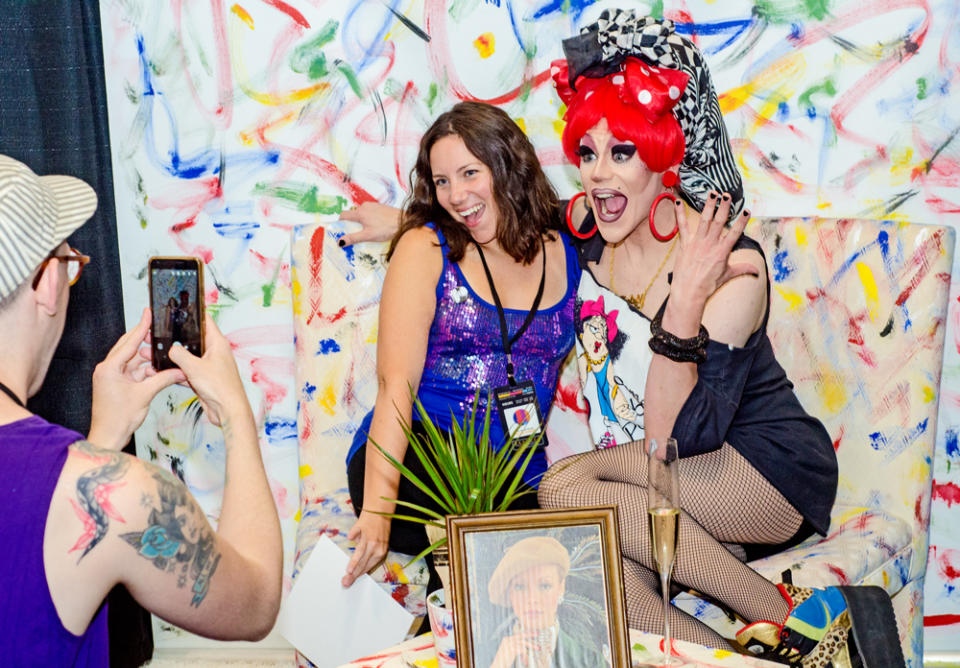
But among them, quite comfortably, were mobs of giddy, star-struck, suburban tweens and teens, standing in line for hours, often with their parents, to meet RuPaul’s Drag Race heroes like Peppermint, Shea Coulée, Sasha Velour, Acid Betty, Ginger Minj, and of course RuPaul — many full-on screaming whenever one of the 7-foot-tall glamazons swept through the crowd.
“I love the overall concept of [the show], how everyone is themselves,” Rebecca Sykes-Quirk, 14, of Conn., told Yahoo Beauty of the VH1 series, just off of its ninth and biggest season yet. Rebecca wore a self-made T-shirt featuring images of eight Drag Race celebs (including Peppermint and RuPaul). She milled around the convention with her mom, Lorrie Quirk, and sister Amanda, 11, who said she was a fan of Peppermint and added, nonchalantly, “My dance teacher is a drag queen.”
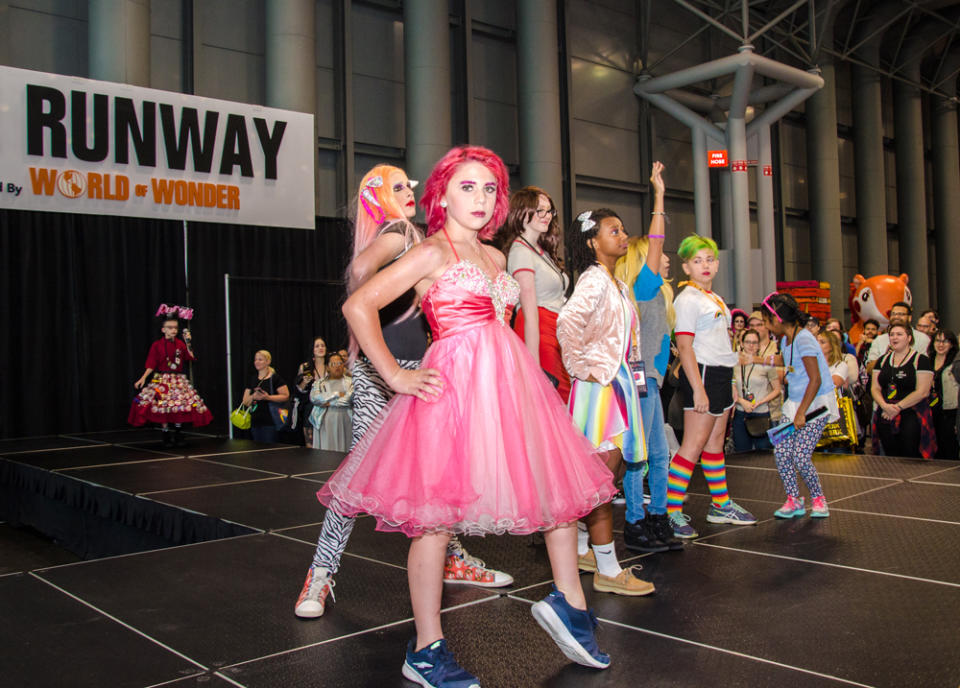
The family-friendly mob scene even included a children’s runway event, starring the likes of social media stars Desmond Is Amazing, 10, and Lactacia, 8. It all may have been a shock to the system for anyone who still thinks of drag as belonging solely to an edgy, double-entendre-laden underground scene better suited to dark, booze-fueled gay clubs at 1 a.m. than to the light-drenched Jacob Javits Center (known more for auto shows and nursing conventions) at noon.
But it shouldn’t be all that surprising, considering that RuPaul’s Drag Race has seen its TV ratings skyrocket since hopping from the LGBT-themed Logo network to VH1 earlier this year. It swiftly moved into the No. 1 primetime Friday slot for coveted 18- to 49-year-old demographic for nonsports cable shows.
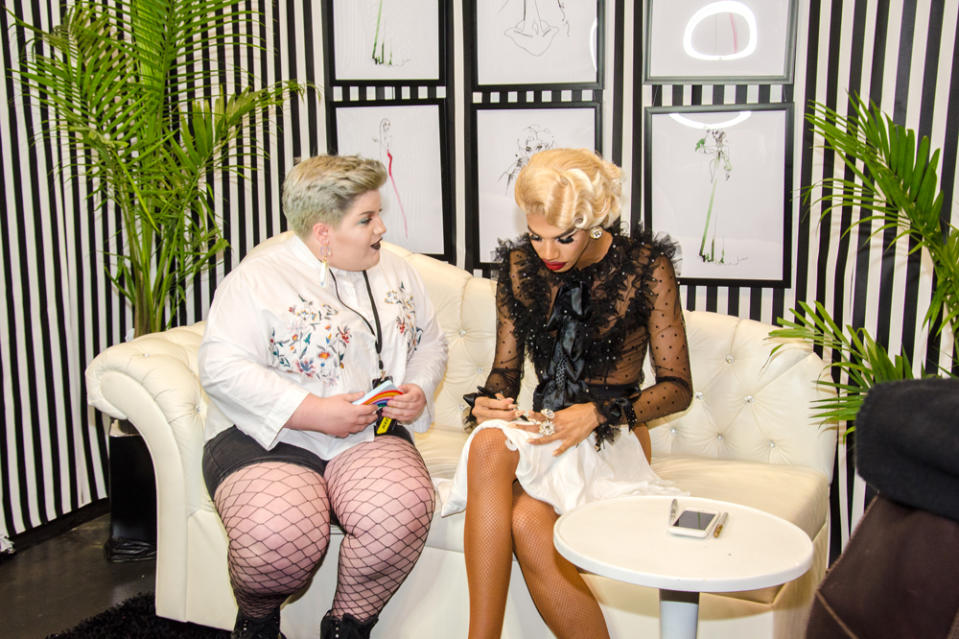
“What’s even more fascinating is that when the show jumped networks, it wasn’t retooled to gain wider acceptance. With the same campy humor and over-the-top performances, it has managed to achieve its best-ever ratings,” Vice noted in June. “If anything, Drag Race is becoming bolder, challenging ideas about what drag culture and even queer identity means in 2017.”
Still, drag is subversive by definition — a way for men to express “otherness” through over-the-top entertainment in the LGBT world — and has always been closely linked to the start of the gay rights revolution, with drag queens helping to lead the charge against police crackdowns at Stonewall in 1969.
And so it all raises the question: Can shady, campy, nasty, counterculture, drag survive going mainstream without getting watered down in the process?
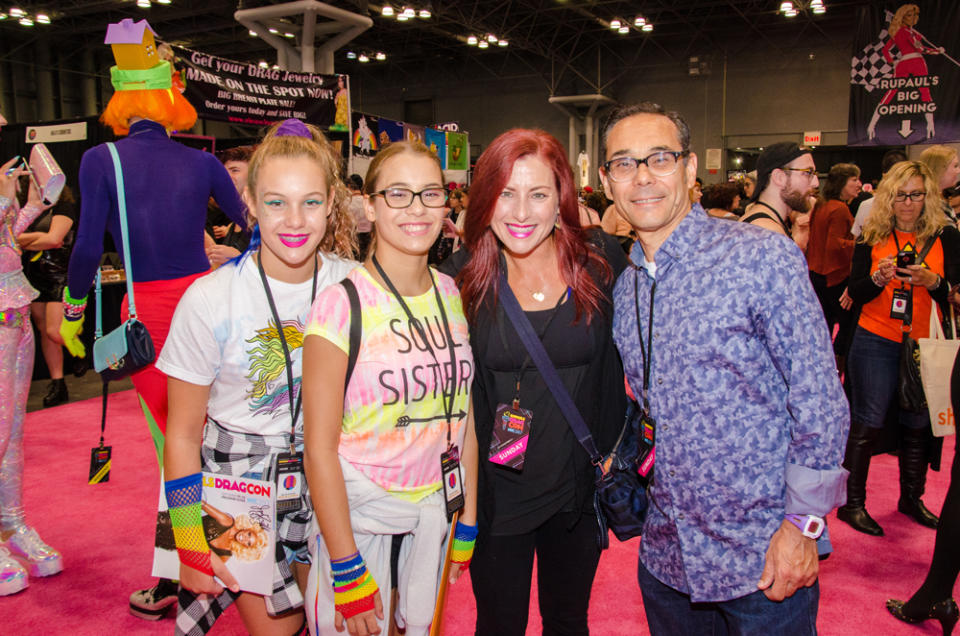
“The great challenge will be to maintain an underground identity in a Disney world,” Mimi Imfurst, the character of Branden Chapman who competed in RuPaul’s Drag Race Season 3, told Yahoo Beauty from her DragCon booth on Sunday (wearing, brilliantly, Handmaid’s Tale-inspired drag, white bonnet and all). “Drag has always been so subversive and a cultural satire, and when you become mainstream, a risk is that you become homogenized.”
Still others say such fear is overblown, and that the positives of drag’s gospel spreading to the masses far outweigh any potential negatives.
“Drag going mainstream is an old story,” James St. James, the notorious former club kid (portrayed by Seth Green in the 2003 film Party Monster, based on James’s memoir), told Yahoo Beauty on Sunday, fresh off a makeover into drag legend Divine in front of a filled-to-capacity audience. “If RuPaul’s ‘Supermodel’ didn’t destroy drag in 1992, then it won’t be destroyed now.”
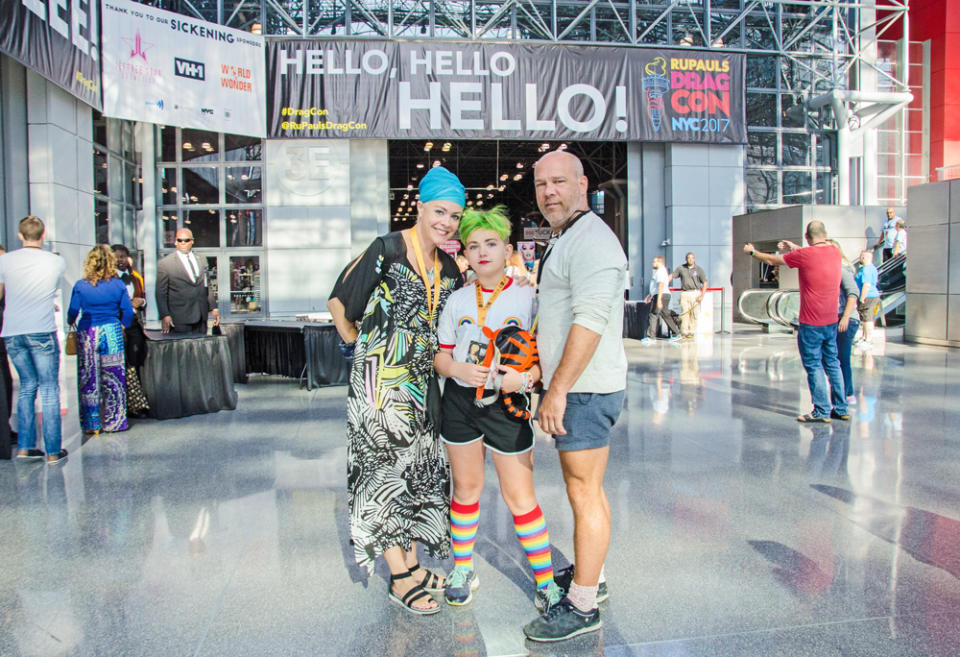
He referred, of course, to the first time RuPaul brought drag lexicon like “sashay,” “shante,” and “work it” to the delicate ears of mainstream America, about a decade after the Supermodel of the World‘s infectious sass blew up in the New York nightlife world. Now, a brief chat with pretty much any fan in the DragCon crowd confirmed that the rest of the world has caught on.
“People are just so drawn to the art form of drag,” Miranda Park, 22, who traveled to DragCon from Williamstown, Mass., to join her friends on Sunday, tells Yahoo Beauty. “It’s such an open place — like, the queens read each other, but it’s still this safe space and great community.”
Cousins April and Michele Proscia, from New Jersey, say they came into the city for DragCon because they are drawn to the culture.
“I always said, when I was pregnant, ‘I hope my son is a drag queen,” April shares about her boy Daniel, 5. “He does like to wear my nail polish and heels!” Michele, who notes that her daughter had already been waiting in line for two hours to meet makeup bad boy Jeffree Star, added, “All my friends are gay. I’ve always loved the drag community.”
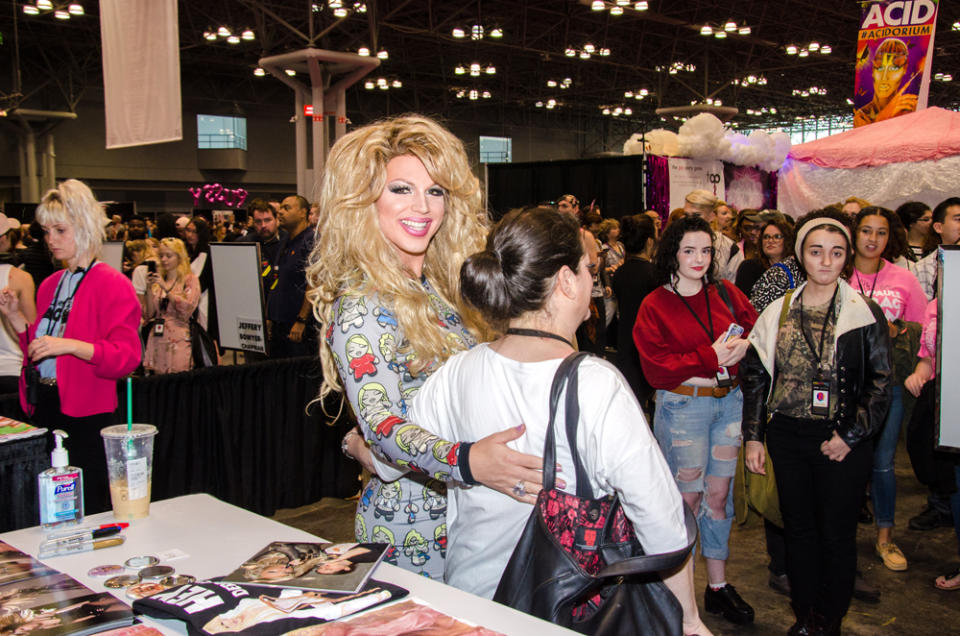
Tessa and Milena, 12-year-old twins from Staten Island, love how Drag Race is “so fun and crazy,” and are particularly fond of Sasha Velour and Peppermint. “I love how it embraces everyone being different,” mom Tara adds.
Kristie Hendricks, at DragCon with her husband, JP, and their son Gage, 10, has similar feelings on the larger message of drag. “I feel like I’m with my people,” says Hendricks, who uses a wheelchair to get around and who got in the spirit on Sunday by wearing a purple wig and cat ears. “Nobody judges. Everybody’s included.”
Isis Vermouth, a drag queen from Poughkeepsie, says that the rise of Drag Race’s popularity has been beneficial for her in a practical way. “I work every weekend,” she says, noting that she’s now getting hired at more and more gigs by events and clubs — particularly straight clubs. “It’s not drag that’s gone mainstream — it’s gay that’s gone mainstream.” And the challenge now, as she sees it, is how to keep yourself unique enough to be relevant with so many more queens in the field.
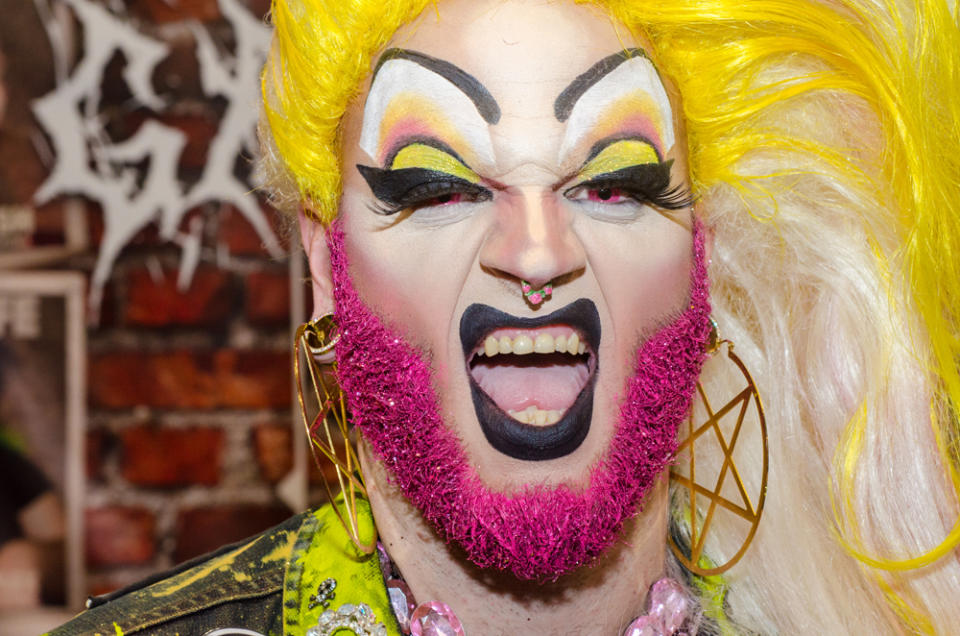
“As [NYC drag legend] Lady Bunny once said, ‘Why would anyone hire you if you’re performing the same as everyone else?’ Vermouth, for her part, sticks to a schtick of 1920s burlesque style, with a mix of original songs and parodies.
Jane Saw, who has a punk, kooky-creepy off-kilter aesthetic that she shares with Jaxknife Complex, Salvadora Dalí, and Donna Slash — promoters of a Washington, D.C., party called Gay Bash — is taking the mainstream phenomenon all in stride. “There’s always been two faces of drag — the 10 p.m. show and then the 1 a.m. show. And as it goes mainstream it will become even more diversified,” she says, with Donna Slash adding, “We’ve always been family-friendly.”
As for the possibility of so many unlikely drag fans hopping aboard simply because of the freak-show aspect, Salvadora Dalí just smiles and shrugs: “When was drag not a freak show?”
Bottom line, according to James St. James, is that spreading the love of drag, in all its diverse glory, is a beautiful thing. “I was frustrated in the first season of Drag Race because everyone had such a showgirl aesthetic. But now contestants like Trixie Mattel and Milk keep changing the game, and kids keep getting exposed to the art form,” he says. “So I don’t see any downside.”
Read more from Yahoo Style + Beauty:
Trans Star Candis Cayne on Beauty: ‘When I Started Doing Drag There Was No YouTube’
This is BibleGirl, a drag queen gaining fame without ‘RuPaul’s Drag Race’
Follow us on Instagram, Facebook, and Pinterest for nonstop inspiration delivered fresh to your feed, every day. For Twitter updates, follow @YahooStyle and @YahooBeauty.


